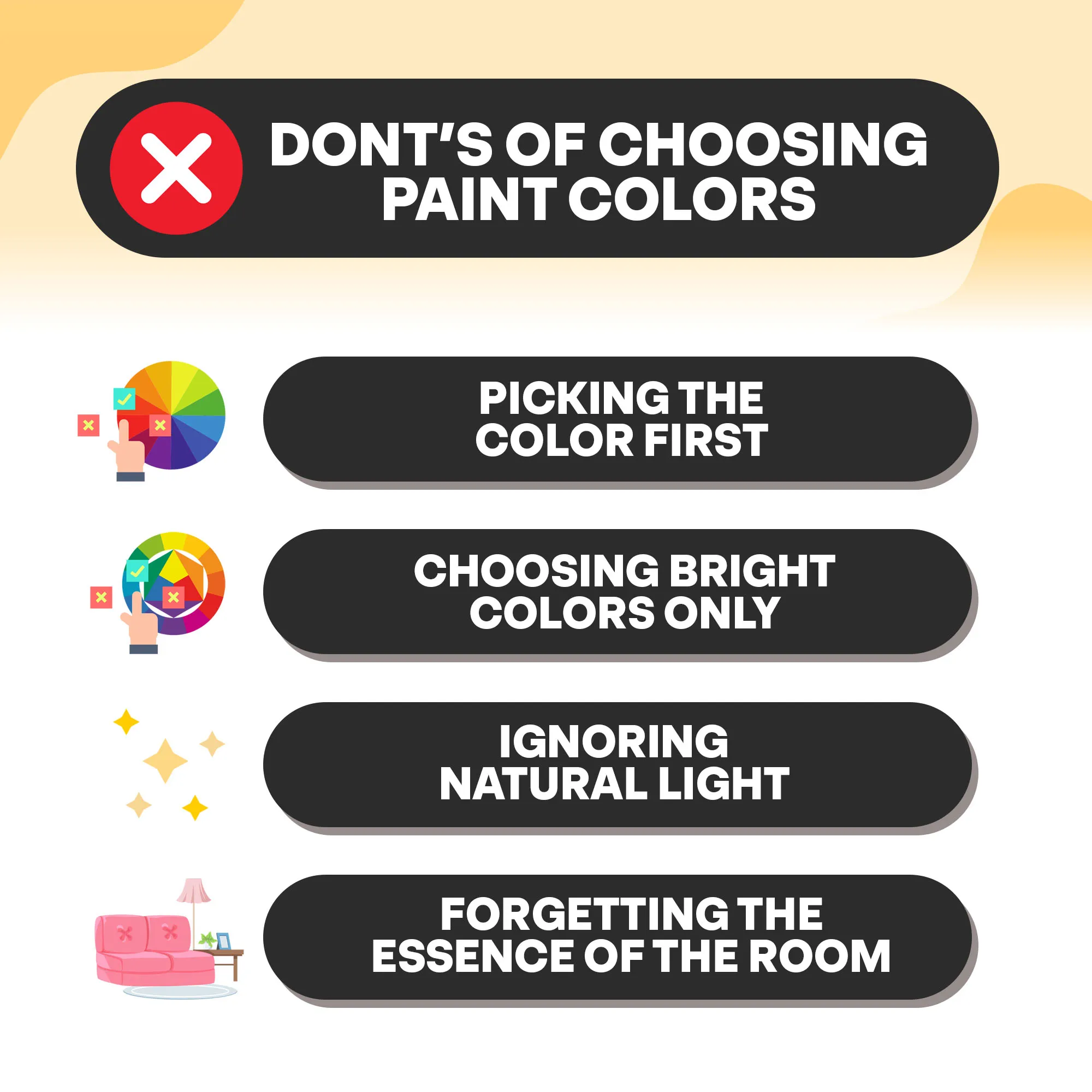When it comes to home makeovers or renovations, choosing the right paint color plays an important part in setting the tone, mood, and ambiance of your abode. Choosing a paint color may appear straightforward, but it is more complex than selecting colors and purchasing paintbrushes.
With hundreds of colors and textures, the picking process might be daunting. In addition, the paint you choose will remain a constant in your life for years. Unfortunately, due to lack of knowledge, experience, and imagination, people often make mistakes in picking paint colors. This blog tackles the do’s and don’ts of choosing paint colors for your home.
Do’s
Knowing how to choose paint colors that will enhance your room and home’s overall appearance. Here are some tips for choosing house paint shades:
1. Take time to finalize your vision.
Before heading to the paint store, ensure you have finalized your vision for your home. Designing a home is about personal preferences, and you need a clear idea of what the room would be like to avoid poor color choices.
It’s best to consider what you want your home or room to radiate. For example, choose brighter colors and warmer tones to create a warm and cozy atmosphere.
2. Create a color scheme that matches your home’s furniture.
Some people work in an empty room when it comes to choosing paint color; however, it’s better to have some furniture and decor so you can match them to your paint. This way, you’ll have a better look if the color blends or complements the furniture. By picking paint colors that mesh well with your home items, you won’t have to start over again to find pieces that go well with your room’s color.
3. Choose the appropriate finish.
Choosing paint colors should also factor in the appropriate paint finish to match it with the room they will design. Paint finishes can add depth to your room by transforming flat walls with subtle or visible textures. In addition, paint finishes can also help your paint last. For example, a semi-gloss finish is best for highly humid areas like bathrooms.
4. Do a test paint.
If you want to see if the color you’re interested in fits your vision well, doing test paints in a specific area or poster board doesn’t hurt. This way, you’ll have a preview of the color and see if it matches your expectations before committing to it.
5. Create a color scheme.
Are you thinking of using more than one color? Create a color scheme with a cohesive and complementary combination that works well. For example, you can create a monochromatic scheme that uses paints from the same color group with contrasting paint finishes. This way, you’ll create accents and contrasts in your room.
Don’ts
Painting your home is an investment in time and resources, so avoiding making mistakes early on is best.
1. Pick the color first.
Before choosing paint colors, there are many factors to consider during your design process. First, you need to get inspiration for your vision—whether it’s through Pinterest or another person’s home. After finalizing your idea, you must also consider the fabrics, furniture pieces, and accents to gauge if they work well together.
2. Choose bright colors only.
Bright colors, while adding a lively and cheery vibe to a room, may also be overbearing and harsh on the eyes if not handled correctly. If you want to add a bright hue to your space but are concerned that it will be too overpowering, you can tone it down.
To produce a more balanced image, tone down a bright color with a duller one. This approach can help lessen the bright hue’s impact while keeping it vibrant. For example, combine a bright yellow accent wall with a soft gray or beige to produce a more subdued and peaceful appearance.
3. Ignore natural light.
Understanding how paint colors will appear under various lighting settings is critical to picking them. The amount and type of natural light in a room and the sort of artificial lighting utilized can affect how paint appears. Testing out paint swatches in several rooms under varied lighting situations is an excellent idea to ensure you choose a color that looks fantastic in all lighting settings.
4. Forget the essence of the room.
When selecting paint colors, it is also vital to consider the room’s function. A bedroom, for example, should be a quiet and pleasant area, so use soothing colors like gentle blues or greens. On the other hand, a home office or study may benefit from stimulating hues like yellow or orange to enhance productivity and focus.
Furthermore, you can explore color combinations and how different colors might work together to produce a specific mood or ambiance. Complementary colors, such as blue and orange or red and green, can give a sense of vitality and intensity. In contrast, analogous colors, such as blue and green or red and orange, can produce a more subtle and harmonious effect.
Conclusion
Knowing how to choose paint colors for your house interior is a necessary skill that may significantly improve your living space’s overall appearance and feel. When choosing colors, consider lighting, furniture, and effects of various color combinations. While it may be tempting to pick your favorite hue simply, keep in mind that the purpose of painting a room is to create a calm or invigorating atmosphere, depending on the function of the area.
By adhering to these dos and don’ts, you’ll learn how to pick paint colors and create an aesthetically beautiful space with a positive attitude and ambiance.
Add a pop of color to your home with Jeff Schultz Painting.
These dos and don’ts are great stepping stones to choosing the best color. Still, it’s best to have an expert opinion that can help you make informed decisions. If you are looking for the most professional Sarasota house paints, look no further than Jeff Schultz Painting for expert painting services.
With our quality residential paint services, we guarantee the best results using the proper color and finishes that can improve your property’s appearance and value. Contact us today, and let us turn your vision into life.















